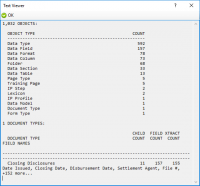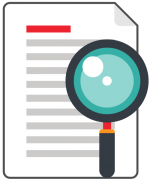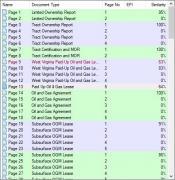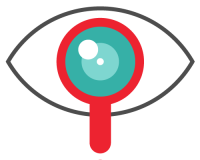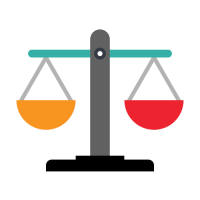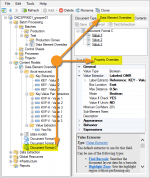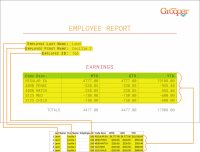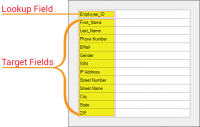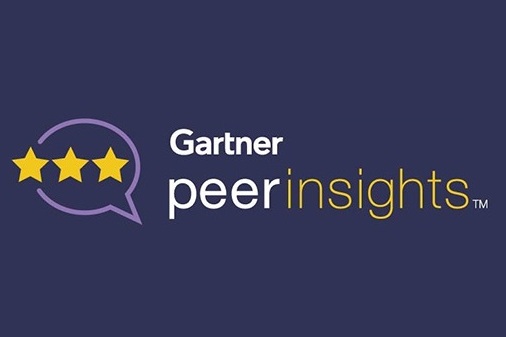Main Page: Difference between revisions
Dgreenwood (talk | contribs) No edit summary |
Dgreenwood (talk | contribs) No edit summary |
||
| Line 22: | Line 22: | ||
| | | | ||
<blockquote style="font-size:14pt"> | <blockquote style="font-size:14pt"> | ||
''[[ | ''[[Fuzzy RegEx]]'' | ||
</blockquote> | </blockquote> | ||
'' | ''Fuzzy RegEx'' (also referred to as "fuzzy matching" or "fuzzy mode" or even just "fuzzy") allows regular expression patterns to match text within a set percentage of similarity. This can allow Grooper users to overcome unpredictable [[OCR]] errors when extracting data from documents. | ||
'' | Typically, regular expression will either match a string of text or it won't. If you're trying to match a word and the regex pattern is even a single character off from the text data, you will not return a result. | ||
''Fuzzy RegEx'' uses a [https://en.wikipedia.org/wiki/Levenshtein_distance Levenshtein distance] equation to measure the difference between the regular expression and potential text matches. The percentage difference between the regex pattern and the matched text is expressed as a "confidence score" (also as a percentage). If the confidence is above a set threshold, the result is returned. If it is below the threshold, it is discarded. | |||
For example, a text string that is 95% similar to the regex pattern may be off by just a single character. If the '''''Minimum Similarity''''' threshold is set to ''90%'' the result would be returned, even though the pattern doesn't match the text ''exactly''. | |||
| | | | ||
The earliest examples of OCR (Optical Character Recognition) can be traced back to the 1870s? Early OCR devices were actually invented to aid the blind. This included "text-to-speech" devices that would scan black print and produce sounds a blind person could interpret, as well as "text-to-tactile" machines which would convert luminous sensations into tactile sensations. Machines such as these would allow a blind person to read printed text not yet converted to Braille. | The earliest examples of OCR (Optical Character Recognition) can be traced back to the 1870s? Early OCR devices were actually invented to aid the blind. This included "text-to-speech" devices that would scan black print and produce sounds a blind person could interpret, as well as "text-to-tactile" machines which would convert luminous sensations into tactile sensations. Machines such as these would allow a blind person to read printed text not yet converted to Braille. | ||
Revision as of 09:22, 23 November 2020
| Getting Started | |||
|
Grooper was built from the ground up by BIS, a company with 35 years of continuous experience developing and delivering new technology. Grooper is an intelligent document processing and digital data integration solution that empowers organizations to extract meaningful information from paper/electronic documents and other forms of unstructured data. The platform combines patented and sophisticated image processing, capture technology, machine learning, natural language processing, and optical character recognition to enrich and embed human comprehension into data. By tackling tough challenges that other systems cannot resolve, Grooper has become the foundation for many industry-first solutions in healthcare, financial services, oil and gas, education, and government. |
Getting Started | ||
| Install and Setup | |||
| 2.90 Reference Documentation | |||
| Featured Articles | Did you know? |
|
Fuzzy RegEx (also referred to as "fuzzy matching" or "fuzzy mode" or even just "fuzzy") allows regular expression patterns to match text within a set percentage of similarity. This can allow Grooper users to overcome unpredictable OCR errors when extracting data from documents. Typically, regular expression will either match a string of text or it won't. If you're trying to match a word and the regex pattern is even a single character off from the text data, you will not return a result. Fuzzy RegEx uses a Levenshtein distance equation to measure the difference between the regular expression and potential text matches. The percentage difference between the regex pattern and the matched text is expressed as a "confidence score" (also as a percentage). If the confidence is above a set threshold, the result is returned. If it is below the threshold, it is discarded. For example, a text string that is 95% similar to the regex pattern may be off by just a single character. If the Minimum Similarity threshold is set to 90% the result would be returned, even though the pattern doesn't match the text exactly. |
The earliest examples of OCR (Optical Character Recognition) can be traced back to the 1870s? Early OCR devices were actually invented to aid the blind. This included "text-to-speech" devices that would scan black print and produce sounds a blind person could interpret, as well as "text-to-tactile" machines which would convert luminous sensations into tactile sensations. Machines such as these would allow a blind person to read printed text not yet converted to Braille. The first business to install an OCR reader was the magazine Reader's Digest in 1954. The company used it to convert typewritten sales reports into machine readable punch cards. It would not be until 1974 that OCR starts to form as we imagine it now with Ray Kurzweil's development of the first "omni-font" OCR software, capable of reading text of virtually any font. |
| New in 2.9 | Featured Use Case | ||||||||||||||||||||||||||||||||||||
|

Discover how they:
| ||||||||||||||||||||||||||||||||||||
Feedback
| Feedback | |
|
We value your feedback! | |
| Other Resources | |||
|
|||

